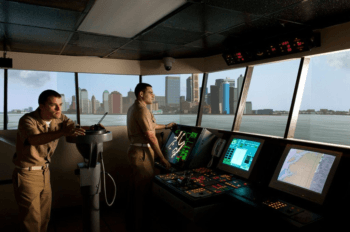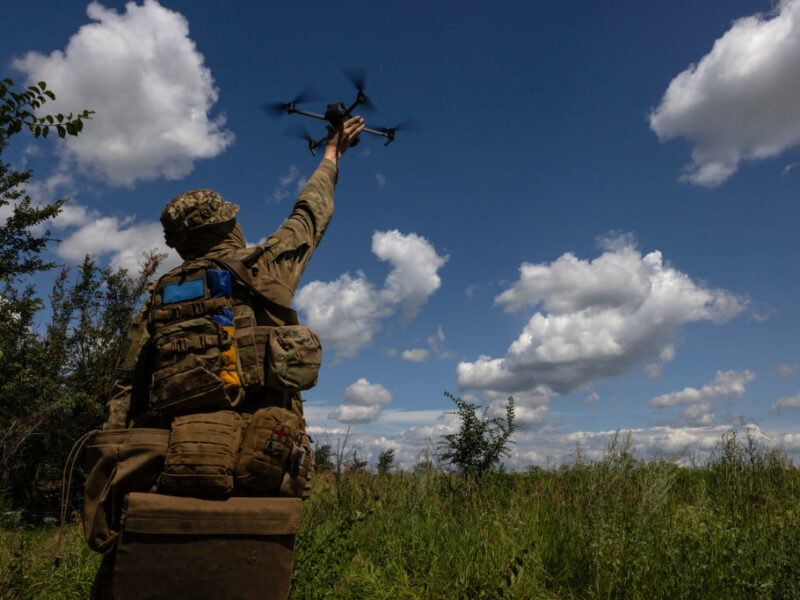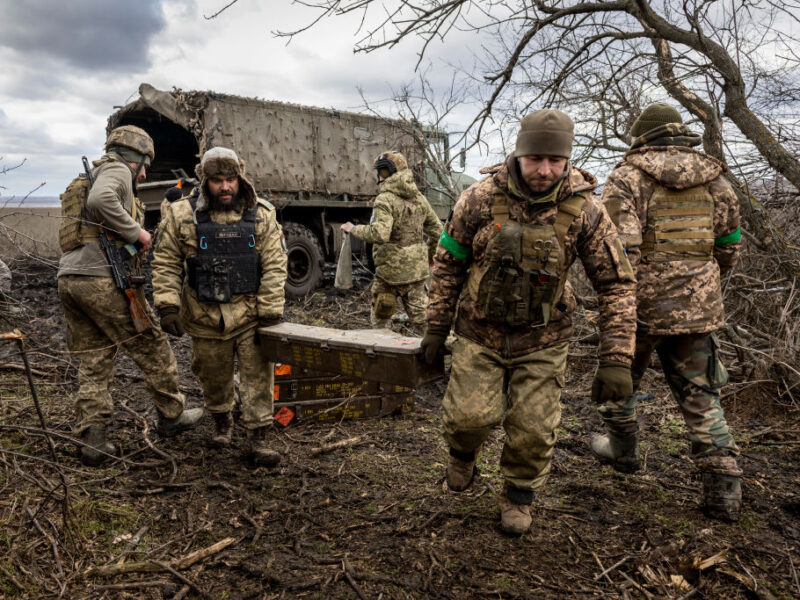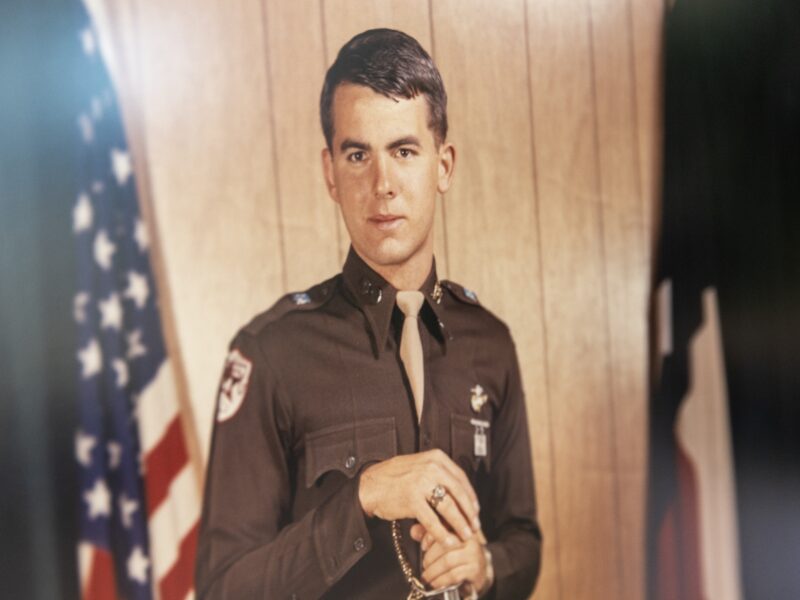Realistic Ship Simulator Trains Sea Cadets
Learning how to steer a 900-foot ship containing hundreds of millions of dollars in cargo is very different from getting a driver’s license, but Texas A&M University at Galveston’s Marine Transportation students are getting the best possible training with the help of new state-of-the art ship simulators.
Just as commercial airline pilots have to undergo simulator training to fly their planes, many maritime jobs require ship officers to master a simulator that displays all sorts of situations that could occur on a sea voyage.
Like a student driver learning to parallel park for a driver’s license, Texas A&M-Galveston’s midshipmen must learn a multitude of skills to obtain a Third Mates maritime license that allows them to pilot ships around the world and is required for most students seeking their Texas A&M degree in Marine Transportation.
“It’s a very valuable degree which leads these Aggies to a life of leadership and responsibility. Such a profession requires highly advanced technical knowledge along with decision making abilities which is now modeled in simulator training,” says Patrick Louchouarn, executive vice president for academic affairs and chief academic officer.

The simulator’s $1 million price tag was paid for with help from the Ed Rachal Foundation of Corpus Christi, and it has undergone another $450,000 worth of additions to make it one of the very best on the Gulf Coast.
The ship simulator teaches by demonstration, and its computer generated rolling action and crashing waves are so realistic that, even though the simulator room never actually moves, it is not uncommon for some visitors to get seasick and request a quick bathroom break.
Barf bags may be needed.
“It’s a virtual reality experience that is about as close as you can get to the real thing. All that is missing is the sea breeze and mist hitting you in the face,” says Capt. Scott Putty, associate professor of Marine Transportation who is in charge of the training device, technically called a full mission bridge simulator.
You might call it driver’s ed meeting “sea ed.”
Putty teaches classes with the simulator, mostly to junior and senior marine transportation students who need the instruction for a U.S. Coast Guard First Mates license. Students master basic ship handling, emergency procedures and casualty exercises, traffic situations, entering and exiting a port and other training scenarios using the simulator.
Midshipmen learn to steer a ship through multiple situations, and visitors can observe as they do so. As they leave a port, they can quickly scan the harbor and head out to sea, but oops – here comes a giant oil tanker headed right for their bow.
As the trainee solves that encounter, Putty can flip a switch and out of nowhere, watch out – here come hurricane force winds and 30-foot waves crashing the bridge, and the ship could be in serious danger. Training, judgement and reaction skills the students have learned are quickly put to use to save the ship.
“We didn’t have simulators like these when I graduated from here,” Putty, a 1979 Texas A&M Galveston graduate who operated ships around the world for more than 30 years, notes. “These simulators are amazingly vivid and the situations are very realistic – it’s like you are right there on the water and steering the ship yourself.”
The simulator can re-create 40 different harbors or ocean landmarks around the world. Sailing by the renowned Sydney Opera House in Australia, under San Francisco’s iconic Golden Gate Bridge or by a Disney Cruise Ship in Galveston Bay are among the situations that midshipmen may encounter using the simulator.
“You don’t know how valuable this is until you stand here and guide the ship by yourself,” says Midshipman Bryan Jones of San Antonio. “It is just so realistic. You learn to do various situations at sea that are very likely to happen in a real-life situation, so the training we get here is extremely important. You encounter real-world problems firsthand and learn how to solve them. This simulator prepares us for almost any situation that could occur at sea.”
The simulator could be a lifesaver – quite literally, says Putty. “Studies have shown that 80 percent of accidents at sea are caused by human error, and only 20 percent are mechanical,” Putty explains. “The goal of our training is to try and eliminate human error as much as possible.”
Media contact: tamunews@tamu.edu.





